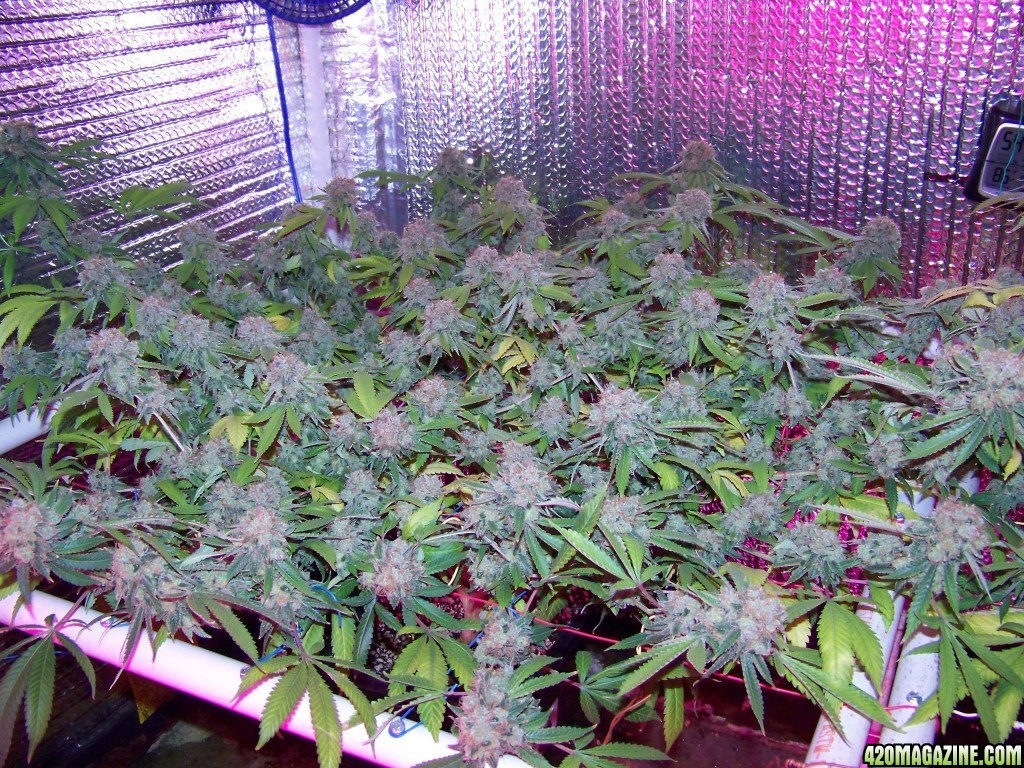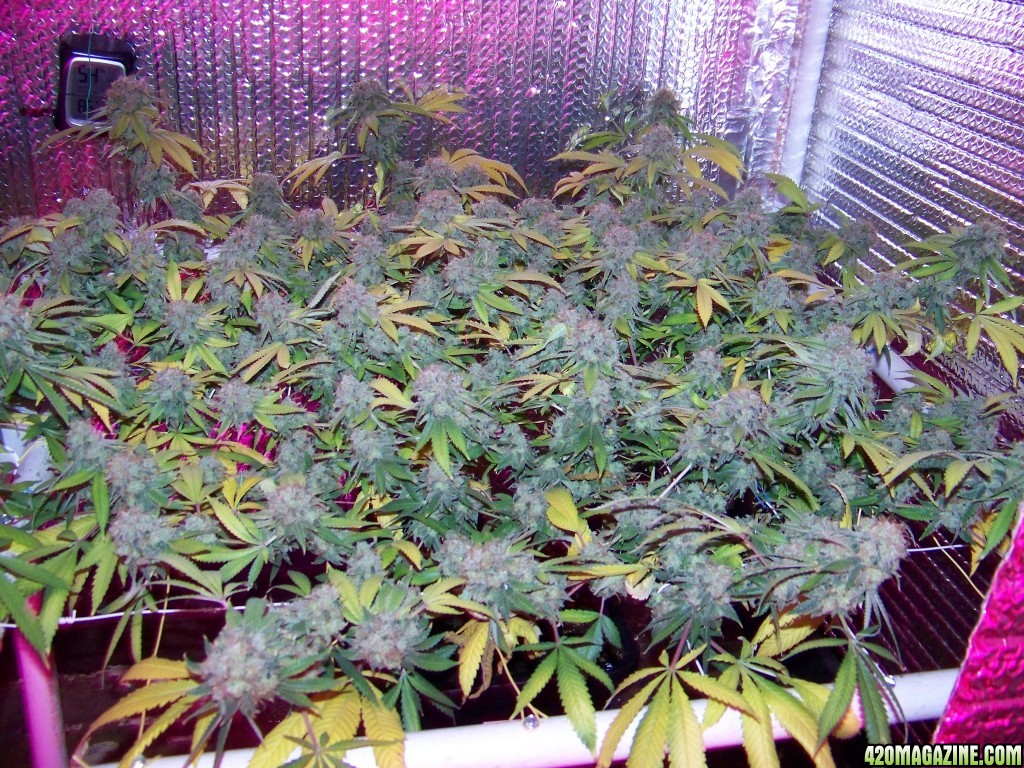- Thread starter
- #26,401
Mars Hydro
420 Sponsor

 Reflecotr192 20% off on Amazon.(USA only)
Reflecotr192 20% off on Amazon.(USA only)Original price is $345.99USD,now is only $276.79USD,saved $69.2USD.
 The price will back to original price on August 16th.Hurry up .
The price will back to original price on August 16th.Hurry up .

How To Use Progressive Web App aka PWA On 420 Magazine Forum
Note: This feature may not be available in some browsers.

 Reflecotr192 20% off on Amazon.(USA only)
Reflecotr192 20% off on Amazon.(USA only) The price will back to original price on August 16th.Hurry up .
The price will back to original price on August 16th.Hurry up .

 New tent update! let's look at the new functions:
New tent update! let's look at the new functions:







 and now it just looks even more AWESOME. great seperation solution you guys came up with. that just upped the tent a level or two in my book.
and now it just looks even more AWESOME. great seperation solution you guys came up with. that just upped the tent a level or two in my book.New tent update! let's look at the new functions:
1.The zipper front door.
2.A mobile tool bag outside the tent.
3.A separate germinating tent aside the grow tent,you can put the two tents together or separate.
4 Except the front door, each of the walls has a obervation window and vent on the beneath.
Any new ideas are welcomed.

 .
.well now I've totally lost interest in that tent, lol. defeats the purpose of a shared light source inside a mother tent to do your cloning. and you best use nothing higher than cfl's in that little tent or the heat will be insane.
tell your guys in engineering to stick that thing in your testing room there sara, and start a simulation grow. which brings to thought one thing I didn't see in the viewable area of testing. "moisture" it is something we deal with, and it has been stated many times that they are tested for it. but all that was shown was a room full of lights, lol.
so maybe put a couple of dwc buckets in that little tent, bubbling away, try various lights. probably what, a reflector 96? maybe some trays of wet soil on the shelf? are there 2 shelves included? I see the adjustable notion. that looks pretty good. well except for the moisture getting into the poles.
however, in closing, nothing will ever match all growers ideal situation together at any given time. but this I do say, you guys did a great job reworking the design. it does look good. you would probably sell a bunch. just not to me.

and you best use nothing higher than cfl's in that little tent or the heat will be insane.
 ) could also be used, but would produce slightly more heat than a 250-watt HPS.
) could also be used, but would produce slightly more heat than a 250-watt HPS.tell your guys in engineering to stick that thing in your testing room there sara, and start a simulation grow.
which brings to thought one thing I didn't see in the viewable area of testing. "moisture" it is something we deal with, and it has been stated many times that they are tested for it. but all that was shown was a room full of lights, lol.
so maybe put a couple of dwc buckets in that little tent, bubbling away, try various lights. probably what, a reflector 96? maybe some trays of wet soil on the shelf? are there 2 shelves included? I see the adjustable notion. that looks pretty good. well except for the moisture getting into the poles.
however, in closing, nothing will ever match all growers ideal situation together at any given time.
however it has lost its luster as a mother tent in my eyes. not too many mothers hold at 1 foot in plant girth.
lost the ability to hold say 3 mothers and do your cloning and vegging in one tent with one light.
that was where I saw the value in the original design. just needed the extra shelf and more width (front to back) or depth if you prefer that word lol.
Alright guys so I have a question to all who own/have owned Mars hydro 300w lights. I was just curious on the life span of these lights? I've seen mixed reviews and just trying to get things straight haha. Anyways, thanks!
Sent from my iPad using 420 Magazine Mobile App

I have 11 of there lights and they are all 2 1/2 to 3 years old, I have replaced a few leds but they are a good light. Have a look at my grow and you will see they grow good bud.


 hope that'll be an adequate set up!
hope that'll be an adequate set up!We need your ideas,which delivery company you guys think it better in Australia?

 They look awesome.
They look awesome.
 I like sugars...
I like sugars...
 pretty buds.
pretty buds.

So the wet trimmed weight on the Goldmine is finally in. 623g
vegged under 48x5 Mars reflector series (100w usage)
Flowered first 14 days or so under the 48x5w.
Then put under the MarsII 400. (200w usage)
Then in the middle of week 4 i added the 48x5 as a site light. (300w total usage when going at full blast)
Grown in 26L smart pot. with reused biobizz light mix soil 50% and medeteranian citrus soil mix 40% and 10% clay pellets
using Biobizz nutes - Grow, Bloom, topmax, aloe vera, Alg-a-mig and rootjuice at the beginning.
+ GHE merenal magic. bubbled waters with the ph set at around 6,5-7






 Our engineer did their job very fast.
Our engineer did their job very fast.


wow sara you guys updated that tent pretty quicklyand now it just looks even more AWESOME. great seperation solution you guys came up with. that just upped the tent a level or two in my book.




 Yeah,last time several growers adviced to put the tool bag outside of the tent would be better,so this time we did it.
Yeah,last time several growers adviced to put the tool bag outside of the tent would be better,so this time we did it.
 About the front door,i think you gave us a good point,if we make the zipper lower or closer to the floor,it will be better for grower to remove their plants.
About the front door,i think you gave us a good point,if we make the zipper lower or closer to the floor,it will be better for grower to remove their plants. I will tell our engineer.
I will tell our engineer.
NICE! - please convey my compliments to your engineer.
That would make a nice design for a 3'x3' tent with the additional space being 2'x3' or possibly even 1'x3'. Together, it would still be small enough at 3'x3' (or 3'x4') to fit in most spaces, yet provides for both vegetative (various purposes - seedlings, cuttings/clones, and general vegetative growth) and flowering. In my opinion, one's vegetative space does not need to be as large as one's flowering space (since filling a vegetative space of equal size would end up producing an overcrowded flowering area, IMHO).
I like that the tool storage is on the exterior of the tent. Some might wish it to be inside the tent, but I would rather have as much space inside the tent as possible for the plants, lol, and share that space only with things that must be inside it (light(s), et cetera).
The adjustable shelving in the side tent area could potentially double that space's utility, especially if it is strong enough to both hold plants (which could weigh a bit, due to the moisture content in the soil/medium) plus whichever light the grower wishes to hang from the bottom of it.
I would like to see some sort of access on the side that does not have the "extra" tent attached (or, possibly, the rear). Even in a tent that is only 3'x3', it is difficult (and, depending on the grow, can be impossible in practical terms) to reach through the plants to get to the rear from the front access door without disturbing or moving the plants that are in the way. If the grower is using a screen ("scrog") then moving those plants out of the way is simply not an option. This hypothetical secondary access need not be a full-sized door, but it should be of a size that would allow the grower to just reach down to the floor (or at least nearly so) and up to the top of the tent (or within a foot or so of it). I do not envision this secondary access point to be used for the initial filling (or the emptying at harvest) of the tent, merely a way to perform needed maintenance/work. However, it would be nice if the grower had the ability to remove an "average" sized plant - for example, one that is being grown in a five-gallon bucket) in the event that the plant becomes sick or diseased and must be removed in order to save the grow. But that, thankfully, is rare - having to work in one's garden happens in every grow, lol.
About the only other thing that I can think of off the top of my head would be if your engineer could magically find a way to make the reflective material completely non-wrinkled and absolutely straight, lol. But then it would no longer be a tent, it'd be a rigid-walled structure.
As long as the product has a reasonable (good) amount of height, it should sell well.
